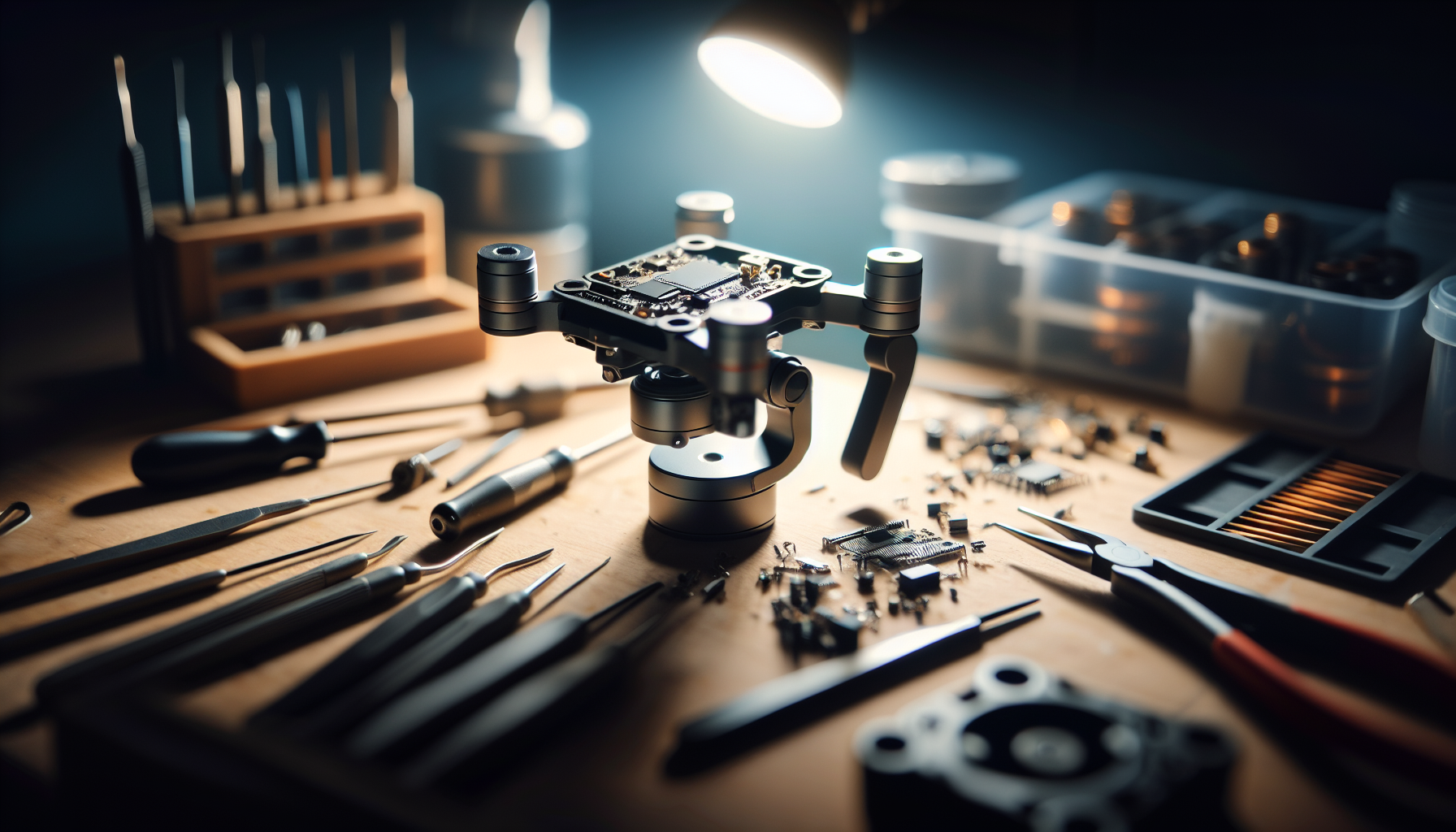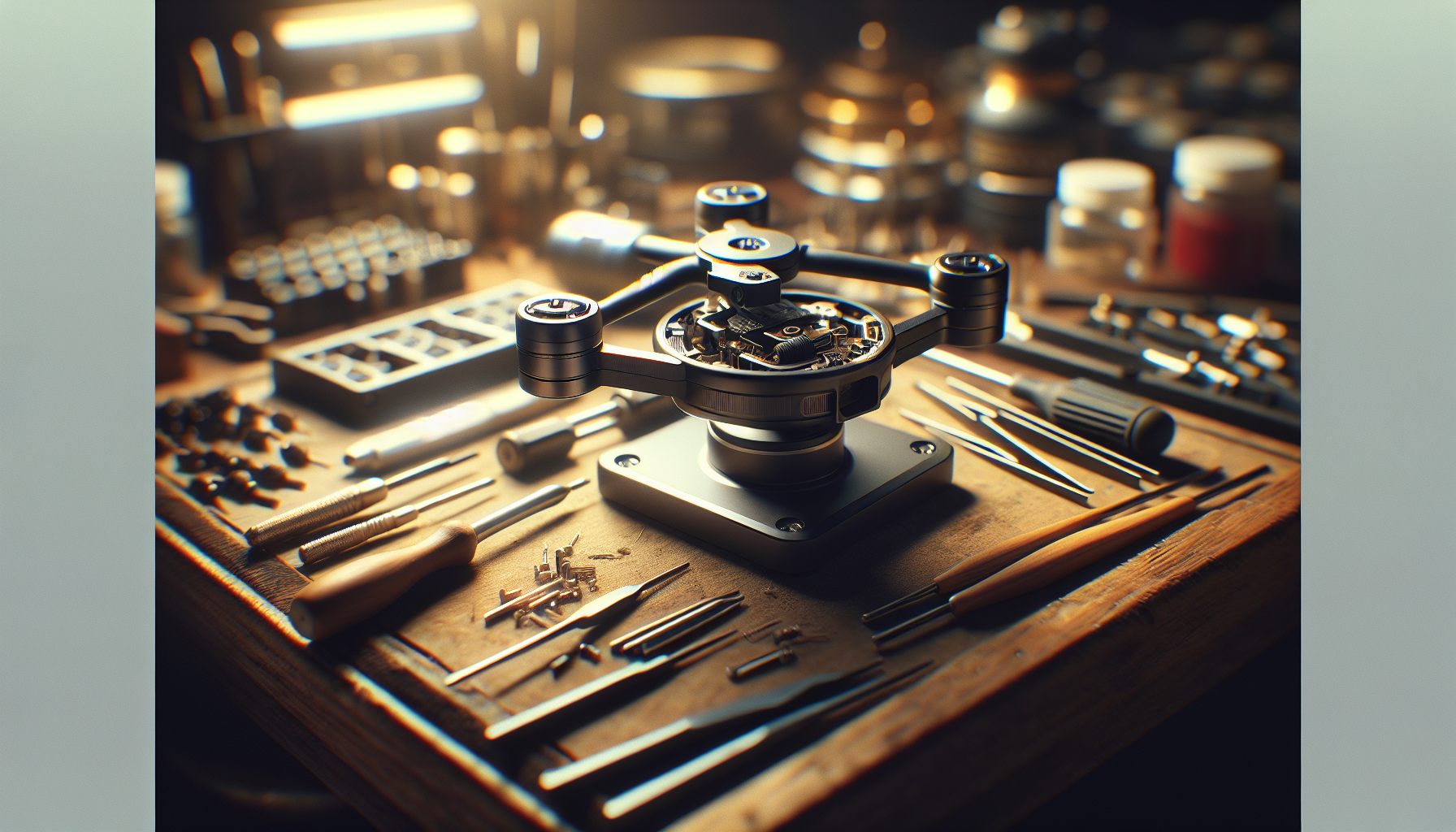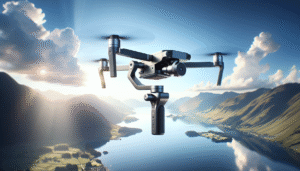Have you ever found yourself in a quandary over whether to repair or replace something that’s broken? It can feel like standing in front of a candy aisle as a kid, with so many options and a finite allowance. When it comes to gimbals—a crucial tool for many photographers and videographers—the decision becomes even trickier. So, when should you roll up your sleeves and repair that trusty gadget, and when is it time to bite the bullet and replace it?

Understanding the Gimbal: A Fickle Friend
Gimbals are marvelous devices that help stabilize cameras in motion, making them ideal for capturing smooth and professional-quality footage. Think of them as the unsung heroes of many films and photoshoots, silently battling the forces of gravity and shaky hands. However, like all technology, gimbals are not immune to wear and tear or the occasional mishap.
The Anatomy of a Gimbal
To make an informed decision on whether to repair or replace, it’s important to understand what makes a gimbal tick—or in unfortunate scenarios, what makes it stop ticking. A gimbal consists of several key parts:
- Motors: These are responsible for stabilization, counteracting any sudden movements.
- Controllers and Sensors: These are the brains of the operation, processing data to balance the camera.
- Gimbal Arms: Essential for physically holding the camera in place.
- Cables and Wiring: Ensures everything communicates efficiently.
Typical Gimbal Problems
With great power comes great responsibility, and unfortunately, some great potential problems. Here are a few commonly encountered gimbal issues:
- Calibration Errors: If the gimbal’s sensors aren’t doing their job, you might find the camera isn’t staying level or is drifting unnaturally.
- Motor Issues: Motors can overheat or fail, leading to poor stabilization.
- Mechanical Damage: Maybe you got a little exuberant with your cinematic pans and ended up bending an arm.
- Battery Problems: A gimbal is only as good as its power source.
Understanding the components and potential problems can help make the repair vs. replace decision clearer.
Decision Time: To Repair or Replace
This is the crossroads where many of us find ourselves, possibly with a broken gimbal in one hand and a cup of coffee in the other. Making the right decision requires careful consideration of multiple factors.
Cost Analysis: The Numbers Game
A reliable rule of thumb in the world of gadgets: ask yourself if the cost of repair is more than half the price of purchasing a new one. If repairs exceed this 50% threshold, it might be more cost-effective to replace the device.
Here’s a simple comparison table to illustrate:
| Expense | Repair | Replace with New |
|---|---|---|
| Minor Calibration | $50 | $0 |
| Motor Replacement | $150 | $0 |
| Mechanical Repairs | $100 | $0 |
| Total Repair Cost | $300 | $500 |
In this scenario, if the repair was $300 and a new gimbal costs $500, you’d have to decide if the sentimental value and additional costs like delivery or downtime tilt the balance toward sticking with your trusty old friend.
Assessing the Gimbal’s Age
Like a fine wine, some gimbals get better with age. Others, similar to milk left out of the fridge, do not. Consider how long you’ve had the device. If it has served you well for several years, it might be nearing the end of its life cycle regardless. Technology advances rapidly, often making newer models more economical and efficient.
Technological Advancements
Speaking of technology, have you peeked at what’s new in the gimbal universe? The latest models may offer enhanced features, improved stability, longer battery life, or lighter construction, which could be very tempting indeed. It’s worth taking a moment to marvel at how far technology has come and weigh these advancements against the nostalgia of your existing gear.

Emotional Attachment: The Sentimental Value
I once had a rickety old chair that groaned every time someone sat in it. It was horrible and uncomfortable, yet I could never bring myself to part with it. The same principle often applies to our beloved gadgets. Before making a decision, consider where your emotional attachment lies.
Sentimental Stories
Does your gimbal have a story? Maybe it was there when you filmed your first wedding, or captured the most breathtaking sunset after you woke up at an ungodly hour. Sometimes, these stories are worth more than any price tag. If so, the slightest nudge may be enough to invest time and money to repair it and keep the memories alive.
The Case for Repair
Once you’ve given proper thought to all these elements, you might decide it’s still worth it to go for repairs. Here’s why repairing your gimbal could be the wiser choice:
- Cost Savings: Repairs can often be much cheaper than replacements for minor issues.
- Sustainability: Repairing reduces electronic waste, making it an environmentally friendly option.
- Quicker Turnaround: If you rely on your gimbal professionally, time spent without it could mean lost opportunities. Some fixes might be quick, getting you back in action sooner.
Common Easy Fixes
Some repairs might not be as complex or expensive as you fear. Here’s a list of common easy fixes that could save you several hundred dollars:
- Firmware Updates: Outdated firmware can lead to software issues. Ensuring your gimbal’s firmware is up-to-date can resolve many stability problems.
- Simple Mechanical Adjustments: Sometimes all it takes is a screwdriver and a little courage to fix loosened screws or displaced parts.
- Battery Replacement: If your gimbal doesn’t hold a charge, try replacing the battery before tossing it out.
The Case for Replacement
On the other hand, there are times when replacement is the more sensible decision. As heartbreaking as it can be to say farewell, it’s important to know when it’s time:
- Recurring Issues: If your gimbal becomes a frequent flier at the repair shop, it may be time to get a new one.
- High Repair Costs: If repair quotes start resembling phone numbers, think about putting that money toward a new model.
- Better Investment: Investing in the latest features might enhance your skills and results, offering a greater return in the long run.
Upgrading Considerations
Consider what innovations might align with your needs. Maybe a more advanced model offers the reliability or features your current one lacks. Here’s a brief list of potential upgrades:
- Smartphone Integration: Some newer models offer seamless integration and control through smartphone apps.
- Advanced Stabilization: Improved motor technology or additional axis stabilization.
- Increased Payload Capacity: Handy if you’re planning to upgrade your camera or lens too.
Conclusion: Your Personal Decision
Making the choice between repair and replacement isn’t straightforward. It involves not just calculations, but also assessments of practicality and personal sentiment. While costs and technological advantages influence the decision, emotional attachment and sustainability might tip the scales.
Remember, the right choice is personal. Whether you decide to fix it or bid farewell, the goal is to keep capturing those perfect moments—with the least amount of hassle and the most enjoyment possible. Good luck, and may your filming adventures be smooth and steady!
![Best Gimbal For DJI Mini 4 Pro In 2025 [Top Picks + Quick Deals]](https://droneaperture.com/wp-content/uploads/2025/06/best-gimbal-for-dji-mini-4-pro-in-2025-top-picks-quick-deals-1-300x171.png)
![Top 5 Drone Gimbals For Cinematic Footage Under $500 [2025 Tested]](https://droneaperture.com/wp-content/uploads/2025/06/top-5-drone-gimbals-for-cinematic-footage-under-500-2025-tested-300x171.png)
